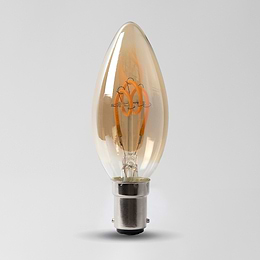Bulbs: The Complete Guide
Bulbs: The Complete Guide
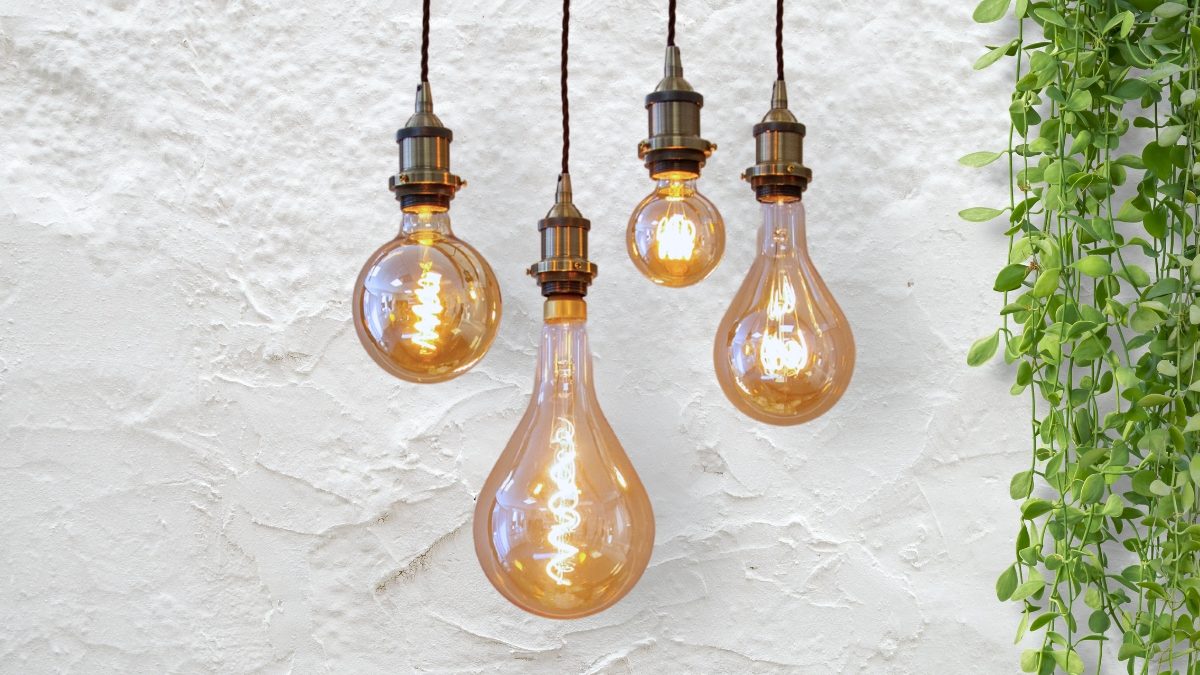
Choosing the right bulb for your needs can be overwhelming given the variety of options available. With so many choices from different fittings, colour temperatures, dimming capabilities, smart technology, and light levels, getting the right bulb for your space can seem daunting. In this guide, we will walk you through the key information that will help you to determine which is the right bulb for your purposes.
First, we will outline the three types of bulbs available. With the ban on the sale of new Halogen and Incandescent bulbs in the United Kingdom as of 2021, it is more than likely that you will be using LED bulbs, but it’s still worth knowing the differences.
Types of Bulbs
Incandescent Bulbs - These are the traditional bulbs that most people are familiar with. They produce light by heating a filament inside the bulb. There are many reasons why people prefer incandescent lighting, and their consistent, natural warm light is one of them. The other is that incandescent bulbs are relatively cheap. The problem with this low up-front cost is the subsequent electricity bills that mirror the inefficiency of these bulbs. Incandescent bulbs lose a lot of their energy through heat as a by-product to the light. Not only is this costly in the long run, but because of the heat generated, they have a relatively short lifespan, meaning more bulbs replaced over time.
Halogen Bulbs - Another type of incandescent bulb, the halogen bulbs use halogen gas to increase light output. These are typically much brighter than traditional incandescent bulbs, have a longer lifespan, and are a little more energy efficient, though nowhere near as efficient as LED bulbs.
LED Bulbs - Light Emitting Diode (LED) bulbs are highly efficient and long-lasting. They don’t require gasses to operate and generate very minimal heat, making them extremely energy efficient. They’re also available in a multitude of colour temperatures, including RGB colours to create any ambience or colour scheme you need for a lighting project. The only downside to an LED bulb is their higher upfront cost. This, however, is offset by energy savings over time, and is worth the investment, especially considering their longer lifespan than an incandescent or halogen bulb.
Smart Bulbs - While technically still an LED bulb, a smart bulb has the added benefit of smart technology built into it. This means you can control your light wirelessly via your phone for ultimate convenience. These still have all of the benefits of an LED bulb.
Bulb Fittings and Caps

Bulb fittings, also known as caps or bases, are the part of the bulb that connects to the power supply. Each type of bulb has a letter followed by a number. The letter denotes the type of fitting, while the number represents the size of the fitting in millimetres. For example, B22 represents a 22mm Bayonet fitting. This helps you to understand the precise size you may need for your fixture.
E14 - Small Edison Screw (SES): small size for lamps and smaller fixtures.
E27 - Edison Screw (ES): The larger and more common size for ceiling, floor lights, large table lamps, and wall lights.
B15 - Small Bayonet Cap (SBC): Used for small wall fittings and table lamps.
B22 – Bayonet Cap (BC): Widely used in the UK and other countries.
GU10 - Common in spotlights and downlights, especially in kitchens and bathrooms.
G4, G9 and GU5.3 - These have small pins, designed for cooker hoods, or as smaller decorative or accent lighting.
Lumens
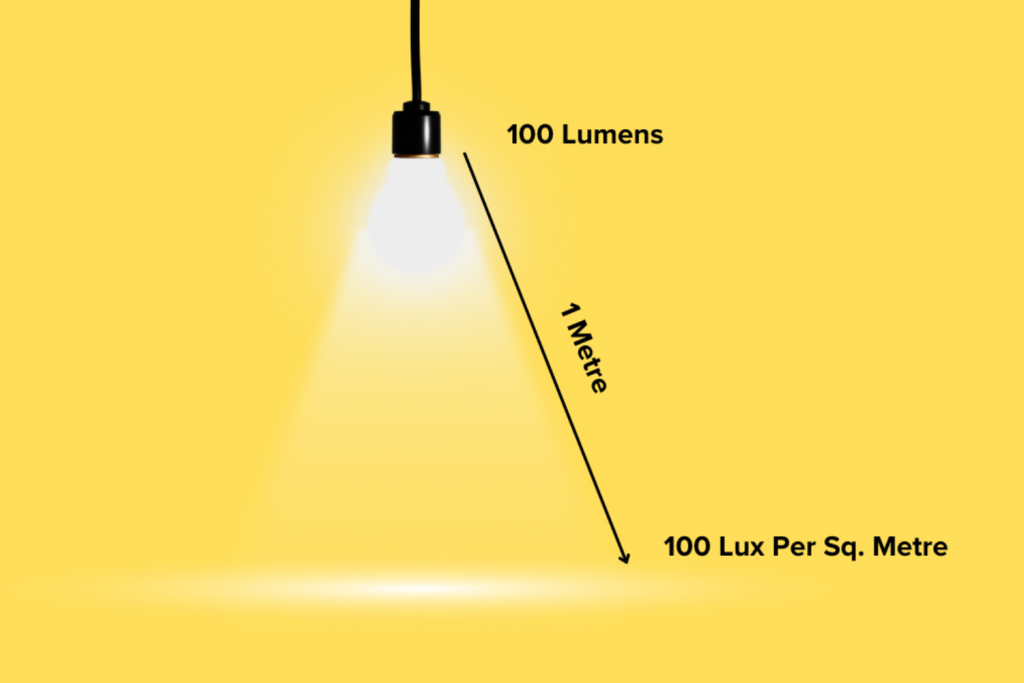
Lumens represents the brightness in a bulb, while Lux measures the amount of light that falls onto a surface. The higher the lumens, the higher the brightness in the bulb. The brightness you require for your room depends on many factors, such as the size of the space, the purpose, and the amount of natural light the room already has. A kitchen will require much more light than a bedroom, so take this into consideration when deciding on how many lumens you choose.
To learn more about lumens and lux, visit our blog, 'What is Lux Level?'
Dimming Functions
Not all bulbs are created equal, and that counts for dimming as well. You can often find bulbs marketed as dimmable or non-dimmable bulbs, and dimming an LED is not quite as straight forward as simply reducing the power to the bulb.
Typically, the most common operation for LEDs is Pulse Width Modulation (PWM). This works by switching the LED on and off rapidly enough that the human eye perceives a steady light. When adjusting the brightness on this type of LED, the ratio of on-time to the off-time is adjusted within each cycle. In simple terms, at 10% brightness, the LED is only on for 10% of the cycle, and off for the other 90%. Turning up the brightness to 50%, the ratio would change, and the LED would be on for 50% and off for the other 50%.
Without dimming capabilities, the LED bulb is unable to maintain this cycle and results in strong flickering, or the bulb failing entirely. To avoid this, ensure that your bulbs are fit for dimming before pairing with a dimmer switch.
Dim to Warm is a clever feature that’s only possible with LEDs. Using a regular dimmer switch, you can adjust the colour temperature of your light, as opposed to adjusting the brightness. This allows you to seamlessly move between different colour temperatures without the need for more than one light.
Colour Temperature
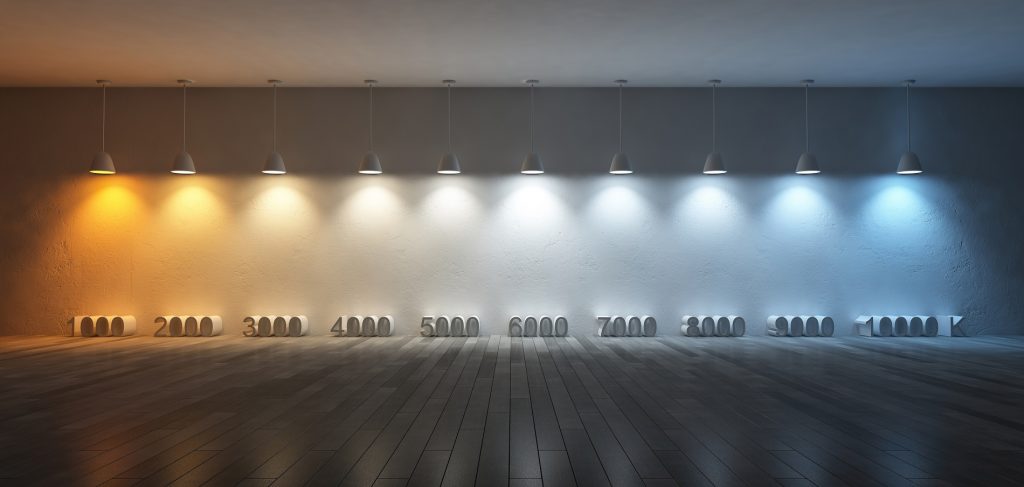
Colour temperature plays an important part in the function of your space. Temperatures range from 1000k for the warmest tone of light with more orange right up to 10,000k for a cool blue. Typical bulb levels will range between 1500k and 5000k. Visit our blog ‘What is Colour Temperature’ to learn more.
Warm temperature light is typically used for ambience, while cooler toned light is best for workspaces and for illuminating work surfaces. Using a cool toned light in a reading nook will not lend to a relaxing atmosphere. Similarly, a warm tone may not allow you to see as well in a workspace.
It can also shift the appearance of colours in the room. Paint colour may appear a lighter or darker in shade. It may even appear a different colour entirely depending on the temperature of the light. The cooler a light gets, the bluer the tone, whereas orange is the base for warmer colour temperatures. It’s important to bear this in mind when choosing colours in your interior design.
CRI

Similarly to colour temperature, CRI or Colour Rendering Index, refers to the way that light emitted reflects colour back. A lower CRI bulb can leech colours, and affect the way that you view that colour, whereas a high CRI bulb will allow those colours to be reflected back to the eye as true as with sunlight.
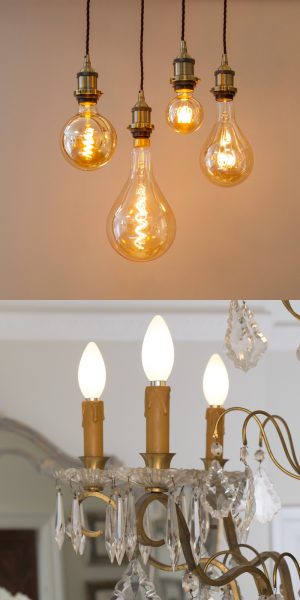
Opal VS Filament
The style of bulb you choose for your light fitting primarily depends on the design of your fitting, though the opacity of the glass has an impact on the kind of light it emits as well.
Vintage style filament bulbs pair perfectly with a decorative glass pendant or bulb holder. The bulb adds a decorative element to the fitting which perfect for vintage or industrial interiors. There are also larger statement bulbs that are perfect for stand-alone fittings or as part of a larger lighting design, making the bulb itself the centre of the display.
Opal glass bulbs are perfect for enclosed shades or pendants where the light can be diffused evenly around within the fitting. The same can be said for open fittings for a more evenly diffused light around the entire room.
Considerations for Choosing the Right Bulb
Choosing the right bulb involves balancing brightness, colour temperature, and function. Determining the primary use of the bulb is the best place to start. Do you need cooler, brighter task light for your kitchen, or do you need warmer, softer light to relax in your bedroom? Choosing a dimmable bulb, or even a smart bulb gives you the choice for rooms where you might need to adjust your lighting, not to mention typically being more energy saving. Ensure that you have chosen the right bulb cap to fit the light fitting, and that the bulb itself can fit inside your chosen light fitting. Once you have answered all of these questions, you will have a clear understanding of the type of bulb you will need for your space.
[related_products is_auto_added="1"]


